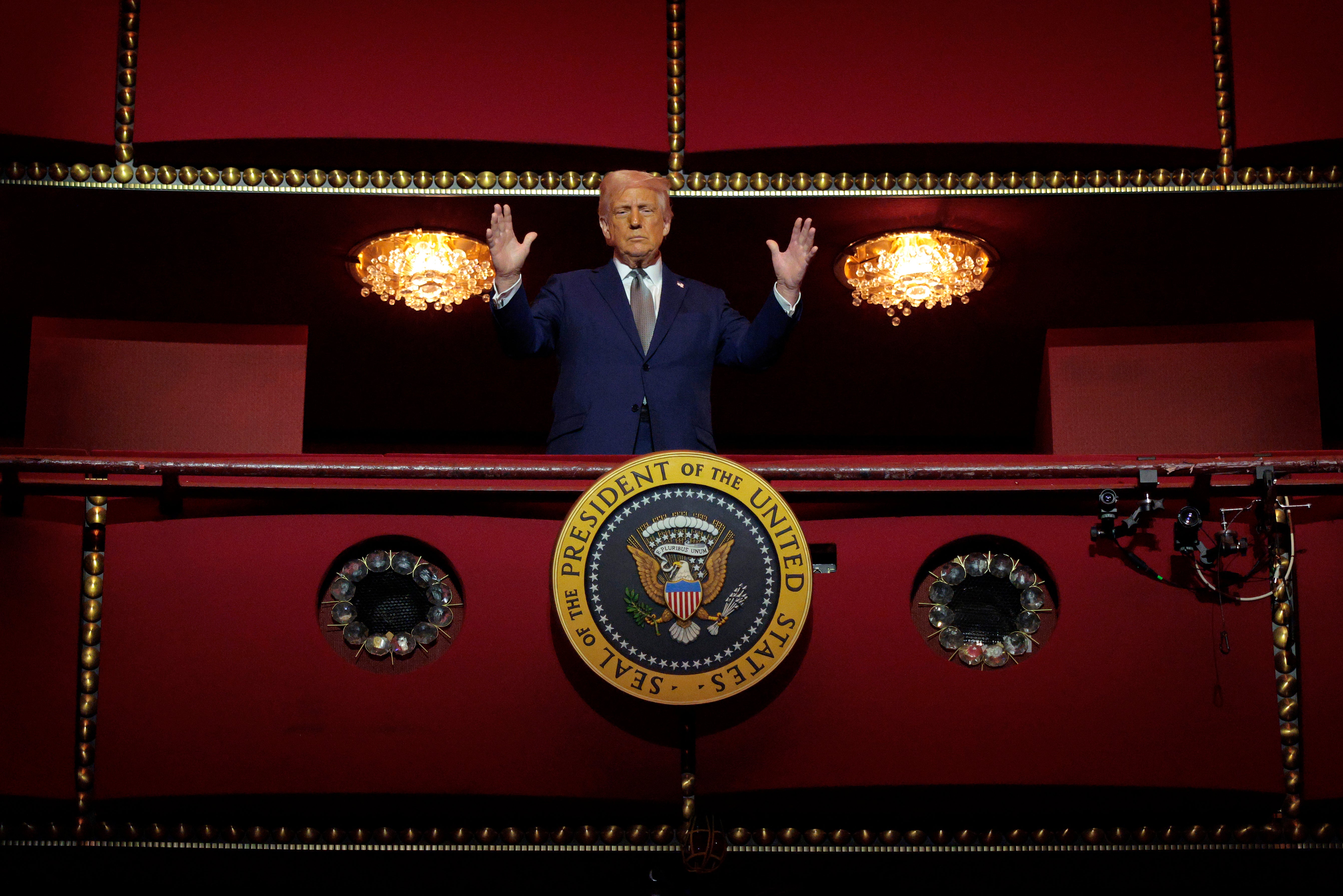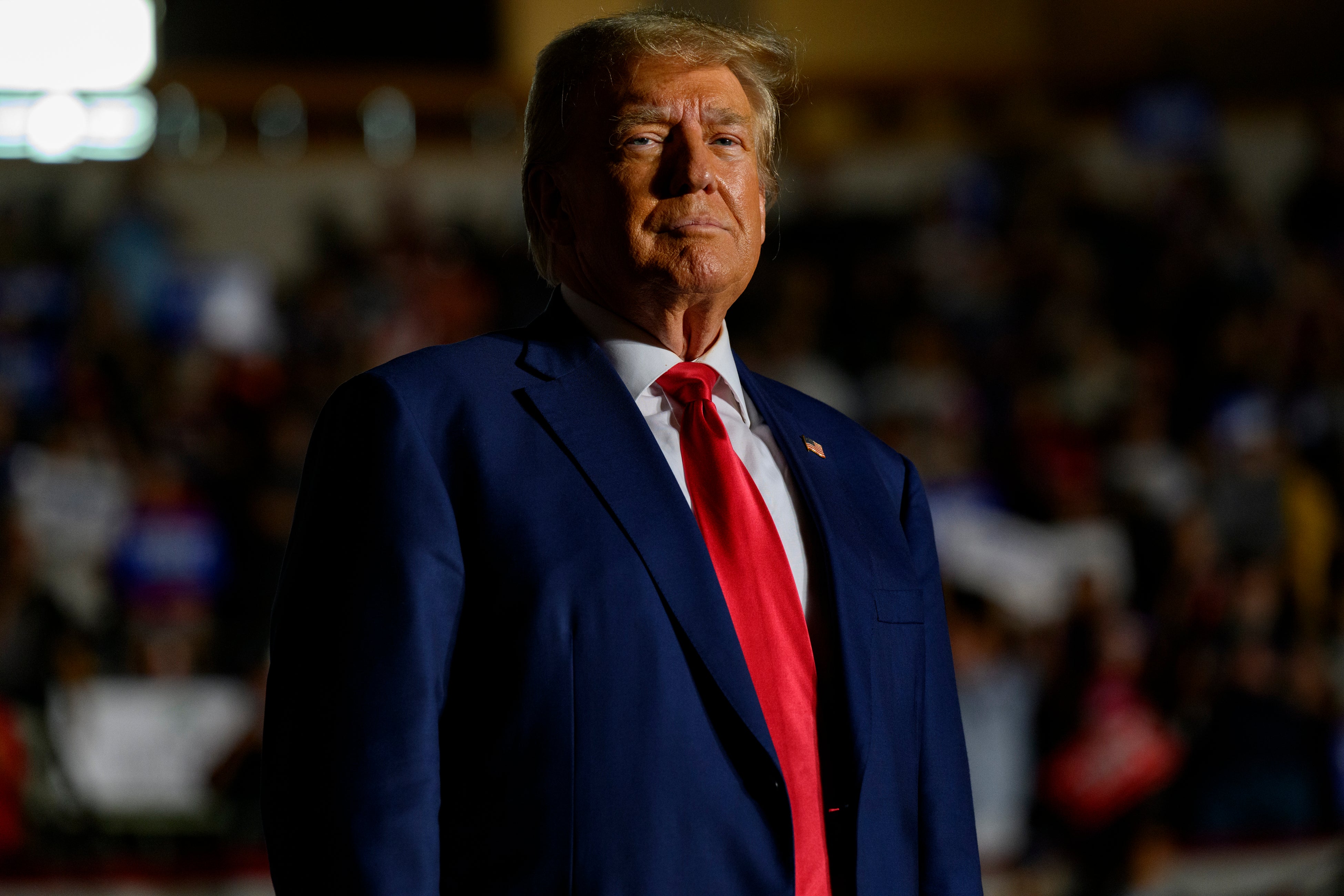Plans are already in motion for a Trump third term – no matter what the law says
Donald Trump has claimed he could serve a third term as president despite it going against the US constitution. In an interview he said there were ways around the rules and that his supporters wanted him to stay on. But, asks Alex Hannaford, how seriously should we take him and what would it mean for the future of America?

When Donald Trump’s former chief strategist Steve Bannon said “I’m a firm believer that President Trump will run and win again in 2028,” last week, it should have been a surprise, but wasn’t. “We’re working on it. … We’ll see what the definition of term limit is,”the dishevelled Bannon told NewsNation. It wasn’t the first time he had mentioned it either. The president’s adviser, who went to prison for refusing to testify before a congressional committee about the 6 January insurrection, suggested it in December. Then, he argued that Trump could circumvent the 22nd amendment, which codifies the two-term limit, because the word “consecutive” is not in the text of the document.
Trump has been making his feelings clear too. In an interview with NBC over the weekend, the president said he was “not joking” about seeking a third term and that there are “methods” to staying in office despite a constitutional ban on presidents serving more than two terms in office.
He has form. Shortly after his election victory last November, the president told congressional Republicans: “I suspect I won’t be running again unless you say, ‘He’s so good we’ve got to figure something else out’.”
Then, in January, during the annual House Republican retreat in Florida, he joked with speaker Mike Johnson: “Am I allowed to run again, Mike?” In February, he asked supporters at the White House: “Should I run again? You tell me.” Offhand musings about a third term in office sound less like bluster and more like a blueprint.
The safeguard of the two-term president emerged in direct response to Franklin D Roosevelt’s unprecedented four-term presidency during the Thirties and Forties. Before Roosevelt, the informal precedent set by George Washington – stepping down after two terms – had been respected by every president. Today, the 22nd amendment leaves little room for interpretation: “No person shall be elected to the office of the president more than twice, and no person who has held the office of president, or acted as president, for more than two years of a term to which some other person was elected president shall be elected to the office of the President more than once.”
Earlier this year, Republican congressman Andy Ogles introduced a House resolution to amend it to enable a president to be elected for up to three terms. Ogles wrote: “President Trump’s decisive leadership stands in stark contrast to the chaos, suffering, and economic decline Americans have endured over the past four years.
“He has proven himself to be the only figure in modern history capable of reversing our nation’s decay and restoring America to greatness, and he must be given the time necessary to accomplish that goal. To that end, I am proposing an amendment to the constitution to revise the limitations imposed by the 22nd amendment on presidential terms. This amendment would allow Trump to serve three terms, ensuring that we can sustain the bold leadership our nation so desperately needs.”
It certainly wouldn’t surprise constitutional law professor Michele Goodwin if Trump did actively try to seek a third term by any means necessary: “There has already been a display of lawlessness in the executive orders and other actions taken by the Trump administration,” she says.
Indeed, Goodwin, a professor from Georgetown Law, says Trump is making history for things that are anti-democratic and anti-constitutional. “For example when the president said he wants to do away with birthright citizenship, he can’t do away with it with the stroke of his pen. It’s in the American constitution. In the kidnapping of people who have green cards and then secreting them away, making history in mass deportations – these things have been wrongfully reported as if these are just people who are ‘just illegals’, but these are people who are in a legal process for refugee status or towards immigration status. So the fact that they may not have a green card does not mean that they’re not in an appropriate legal status and process.”

Birthright citizenship is protected in the 14th amendment and courts have blocked its loss for now. A Ronald Reagan-appointed judge issued an emergency order initially halting Trump’s executive order, saying, “I have been on the bench for over four decades. I can’t remember another case where the question presented was as clear.”
Other legal scholars have dismissed the idea of running for a third term as impossible, but for Trump’s most ardent supporters, constitutional roadblocks have rarely been a concern. In fact, the mere suggestion that he might seek to extend his grip on power has already energised his base.
And there is little political opposition in sight. Robert Reich, who was labour secretary under president Bill Clinton and served in the Ford and Carter administrations, headlined a recent Substack post: Where the HELL are the Democrats? “It should be the Democrats’ moment,” he wrote, “Democrats are nowhere … Almost invisible. They’re squandering this opportunity.” Reich points out that some Democratic operatives are telling Democrats to “play dead”; to give the Trump administration and congressional Republicans who support him “enough rope to figuratively hang themselves”. The midterm elections aren’t until November of 2026. Keep your powder dry. “Rubbish,” says Reich. “Tens of millions of Americans believe there’s no real Democratic opposition to Trump. They feel demoralised and defeated.”

Goodwin says the Trump administration is moving in coercive ways into legal spaces. Universities have been pressured to change their curriculum (Columbia University is placing its Middle Eastern, South Asian and African studies departments into “academic receivership” at the insistence of the Trump administration), and this week vice-president JD Vance was put in charge of “removing improper ideology” from the National Museum of African American History and Culture, which comes under the Smithsonian Institute.
Whether it is a threat against law schools, or banning major law firms who have worked for his “enemies” from receiving government contracts, as of this month there are now 60 universities “under investigation” by Trump’s Department of Education “for antisemitic discrimination and harassment”.
“When people feel threatened, as some people are,” Goodwin says, “they begin making concessions – unnecessary concessions.” In the past, she says, we could rely on the unbiased, fair judiciary to take care of things, but even successful lawsuits hold little weight with the new administration. “The difference now is there’s a certain level of defiance [on the part of the Trump administration]. And that becomes a problem.”
A house set aflame can be decimated in no time ... This dismantling, the firing of people, the gutting of various institutions, may take decades in some instances to rebuild and to restore.
Law professors are fearful, she says. “There are those in the legal profession who saw in the first week of his presidency there had already been sufficient unconstitutional executive orders that caused concern that there was a crisis of democracy.” With the help of his henchman Elon Musk and his Department of Government Efficiency, Trump is also attempting to shut down agencies created by Congress, placing 4,200 staff at the Agency for International Development on leave in February, and firing 1,600 from their jobs. Lawyers said Congress would be able to stop Doge but that clearly didn’t happen. “There are people afraid right now.”
The problem, she says, is “it’s much easier to destroy something than it is to build it. A house set aflame can be decimated in no time. And it’s not just about recreating the physical structure. It’s the character. It’s remembering how people who respected each other worked together. This dismantling, the firing of people, the gutting of various institutions, may take decades in some instances to rebuild and to restore. And it will mean a commitment from our government to do so at a time when the government will be economically distressed.”
Goodwin says the US is in a “thought experiment” right now. She says Steve Bannon spoke a while back about “flooding the zone”. Bannon was talking to writer Michael Lewis in 2018 when he said: “The Democrats don’t matter. The real opposition is the media. And the way to deal with them is to flood the zone with s***.”

Goodwin reckons there’s a psychological component to this. “One analogy that comes to mind is domestic violence. In a family environment where somebody is flooding the zone with physical and mental abuse – various forms of coercion so you don’t know what to expect when that person comes home at night – it’s destabilising; you’re fearful; you’re so overwhelmed by it. But the overwhelming aspect of it works – and that’s what it’s intended to do. [What Trump is doing] is meant to destabilise people; to cause a kind of paralysis. People are so overwhelmed they lose sight of what to work on, what to do.”
While Goodwin calls the current situation “dystopic”, she believes help might come from a somewhat unlikely source – the Supreme Court. At the beginning of the month, chief justice John Roberts and justice Amy Coney Barrett, nominated by Trump during his first term, joined the liberal wing of the court in denying the administration’s efforts to freeze $2bn to pay foreign aid organisations for work they had already completed. In response, alt-right Maga activist Jack Posobiec said that Barrett was a DEI hire.
Those who had worried the Supreme Court’s lurch to the right, and its contentious ruling that presidents are immune from criminal liability for actions taken in office, would mean Trump would be given carte blanche to run roughshod over the constitution might be proved wrong. In mid-March, Roberts again defied Trump in his calls to remove a judge, in what the Associated Press called “an extraordinary display of conflict between the executive and judiciary branches”.
In a democracy under siege, the Supreme Court is the last line of defence. The question is, considering its make-up, whether it will be up to the task hit after hit. Or, when the time comes for a third-term run, will so much have gone up in flames that people will forget where the hosepipe is or even where to point it?






Join our commenting forum
Join thought-provoking conversations, follow other Independent readers and see their replies
Comments